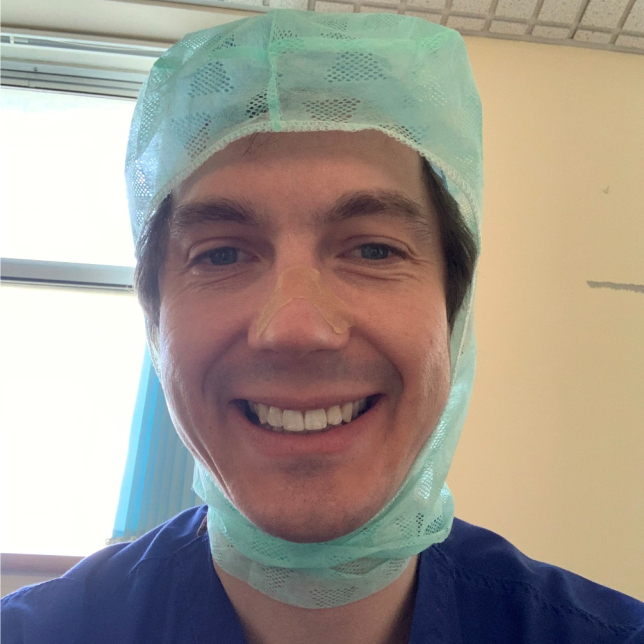Background
Prolonged pressure from Filtered Face Piece (FFP) masks during the current coronavirus (COVID-19) pandemic has caused some healthcare professionals to develop pressure areas or device-related pressure ulcers (DRPU).1 Images of such injuries (Fig 1) have drawn attention from both social and mainstream media.2 When the first author encountered FFP mask discomfort during a hip fracture case, help was sought from tissue viability colleagues. We describe a simple, effective and low-cost method of protecting the particularly vulnerable bridge of nose.
Figure 1.
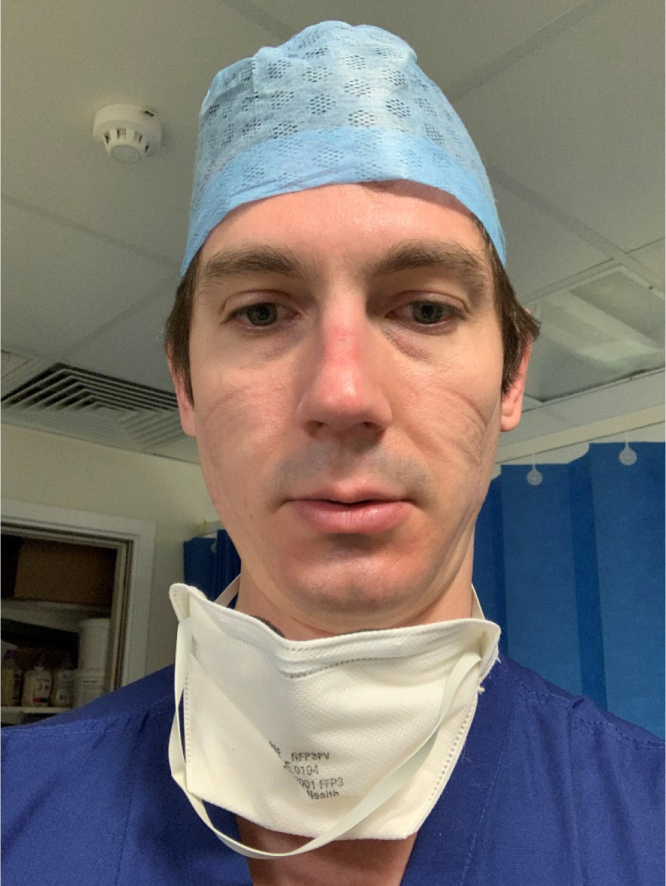
Effect of FFP mask, no DuoDERM®
Technique
A self-adhesive hydrocolloid dressing, in this case, DuoDERM® EXTRA THIN (Reading, RG1 3JH, UK), is cut into a thin strip (Fig 2). Use of the curved edges of the dressing is made to follow the contour of the nasal bridge and minimise waste (Fig 3). The strip is positioned directly beneath the mask on the bridge of the nose and can provide both pain and pressure relief for an entire shift (Fig 4). A repeat fit test (Fig 5) with hydrocolloid dressing strip in situ beneath the FFP mask does not appear to compromise the seal.
Figure 2.

DuoDERM®, Cavilon™ and scissors from TVN
Figure 3.
DuoDERM® applied
Figure 4.
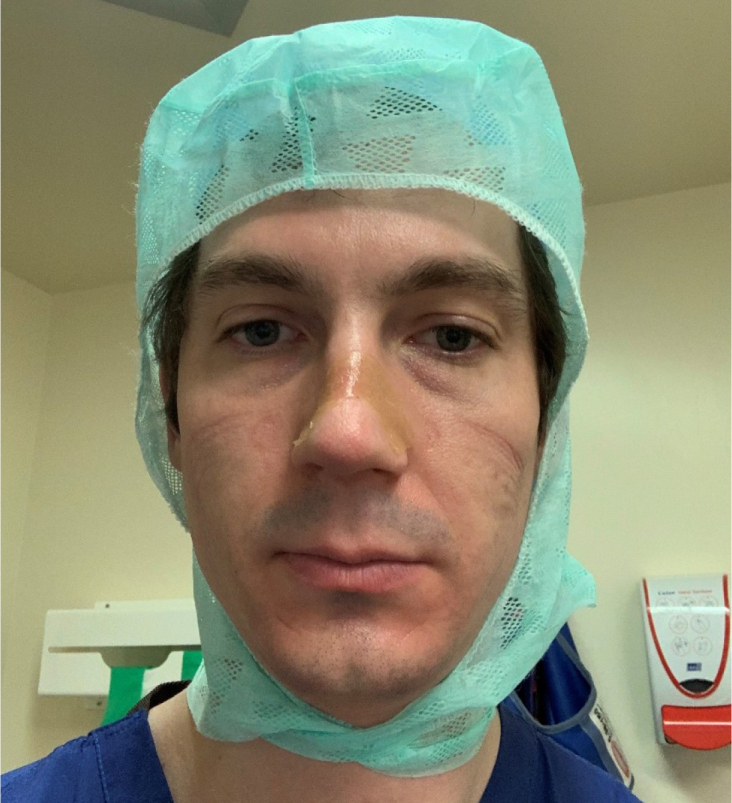
Effect of FFP mask with DuoDERM®
Figure 5.
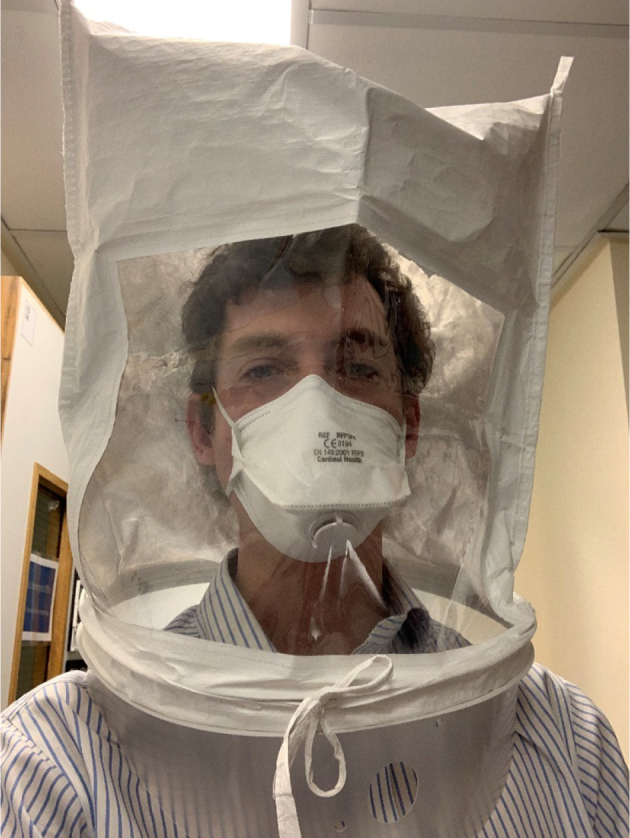
FFP mask fit test
Discussion
Healthcare professionals, including surgeons, whether redeployed to intensive care units or operating with FFP masks, may find this a useful means of avoiding nasal bridge pressure areas. Where available, a no sting barrier film, such as Cavilon™, may first be applied to the bridge of nose for additional comfort (Fig 6).
Figure 6.
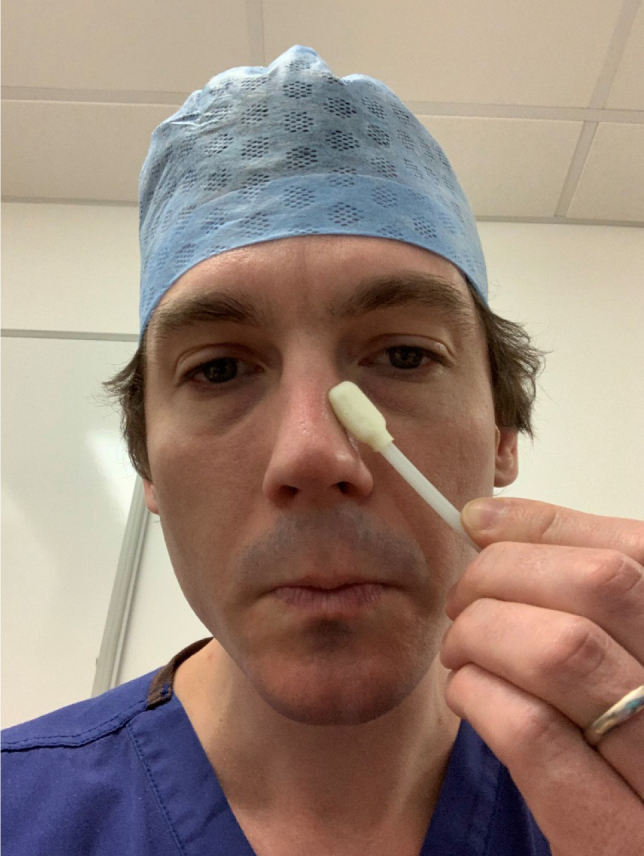
Cavilon™ application
None of the authors have a commercial interest in either product.
References
- 1.Gefen A, Alves P, Ciprandi G et al. Device related pressure ulcers: SECURE prevention. J Wound Care 2020; (Suppl 2a): S1–S52. [DOI] [PubMed] [Google Scholar]
- 2.Mills J. Medics left with sore marks all over their skin from coronavirus face masks. Metro. 5 February 2020. https://metro.co.uk/2020/02/05/medics-left-sore-marks-skin-coronavirus-face-masks-12188952/ (cited April 2020). [Google Scholar]



